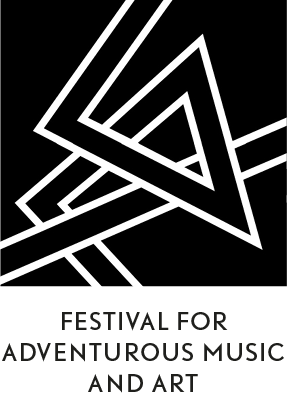Calendar

Technosphärenklänge #3 – Talks & Concert
Haus der Kulturen der Welt , John-Foster-Dulles-Allee 10, 10557 Berlin → MapTickets: Free entrance
13
SatThe third edition of the Technosphärenklänge series presents hybrid music projects operating at the border of art and science. Following the Technosphärenklänge #3 concert on 12 May, performing artists will return to HKW to talk about their artistic research and practice together with Christian de Lutz from Art Laboratory Berlin. Three projects – the world’s first autonomous neural synthesizer that performs with human musicians; water droplets levitated and shaped by sound waves; and the interconnection of spatial sound and high-energy lasers – make current notions of materiality tangible and fundamentally re-think the relationship between nature, technology and human consciousness. All three projects require intensive research and constant collaboration between the artists and natural scientists and technologists, intertwining natural phenomena with the human ability to create abstraction and construction.
Alongside the peerless, timeless Monolake releases on Chain Reaction, Robert Henke is well known for the music, performances, and installations he has been creating under his own name since the early 90s. “Lumière III” is the third iteration of a long-term audiovisual concert project featuring high precision lasers and multichannel sound. Started in 2013, the project required years of artistic experimentation and the development of custom technology. Coming from a strong engineering background, all of Henke’s projects involve the creation of his own instruments and software tools. explore the potentials of technology to intensify perception and express human sentiment
Working at the interface of art and science for over a decade, Amsterdam-based Evelina Domnitch and Dmitry Gelfand created "Force Field” together with computational artist Paul Prudence, acoustic physicist Alexander Miltsen, and the Hydrodynamics Laboratory of the Ecole Polytechnique in Paris. The work was first developed during a two-week residency within CTM 2016 festival in Berlin, supported by the European Network for Contemporary Audiovisual Creation (ENCAC). Exploring normally inaccessible depths of both inner and outer space, “Force Field” extends the tradition of avant-garde research on phenomenological art through tightly-interwoven artistic and scientific practices. Since the 1970s and 80s acoustic levitation techniques have primarily been applied by NASA and ESA to trap and navigate otherwise uncontrollable samples in microgravity. However, in the last two decades the same methods have also been used as a powerful tool for container-less manipulation on Earth. Numerous experiments have been performed in a vast spectrum of research areas, including fluid dynamics, analytical chemistry, atmospheric sciences, molecular biology, and most recently tabletop astrophysics. In “Force Field”, acoustically levitated water droplets resonate, vaporise and reassemble into spheroids, toroids and oscillating polygons while spinning nearly devoid of shear. The performance simultaneously taps into the 3-dimensionality of sound, the elusive physicality of water, as well as the rotational dynamics of celestial and subatomic bodies.
“cellF” is the world’s most advanced neural synthesizer. Its brain consists of biological neural networks derived from human cells and grown in a Petri dish. Using these neural networks, “cellF” controls its analogue synthesizer body, entering into musical dialogue with human musicians. Initiator and bio-artist Guy Ben-Ary and collaborating media artist Nathan Thompson will speak about the project’s creation together with musician Schneider TM, who performed the previous evening.
Closing the talks, experimental vocalist Stine Janvin will perform with “cellF”. Through a diverse range of projects and collaborations (In Labour, The Subjective Frequency Transducer, Native Instrument, Stine II), Motland explores and challenges the physical features of the voice, the acoustics of her external/internal surroundings and new performance strategies.
The evening is hosted by Art Laboratory Berlin (ALB) founder Christian de Lutz. Dedicated to mediating contemporary art at the interface between science and technology and with a recently increased focus on the life sciences, ALB organizes workshops talks, seminars and conferences with a deliberate openness to different disciplines and audiences.
These hybrid artistic test arrangements are in resonance with the “materialistic turn” in theoretical discourse, that shows renewed alertness to the material aspects of reality. This new materiality is also at the core of the HKW’s multi-year research project Technosphere, to which Technosphärenklänge (Sounds of the Technosphere) concert series is associated. Technology increasingly allows to address and control nature’s autonomous processes, while, at the same time, ever more pervasive and intelligent technology is naturalized to appear as a quasi-autonomous global force. It is within those poles that the Technosphere project examines how human artefacts and non-human ecologies combine to compose the global Technosphere, as the new environment in which we breathe and act. In a variety of events, the Technosphere project discusses the origins, challenges and potentials of this new earth system, while Technosphärenklänge listens into its sounds.
Partners
Clot | Groove | Crack | CDM – Create Digital Music | Art Laboratory Berlin | ENCAC – European Network for Contemporary Audiovisual Creation
Funded by
The Federal Government Commissioner for Culture and Media | Federal Foreign Office | Creative Europe Programme of the European Union
Supported by
Laseranimation Sollinger | Max Delbrück Center for Molecular Medicine

